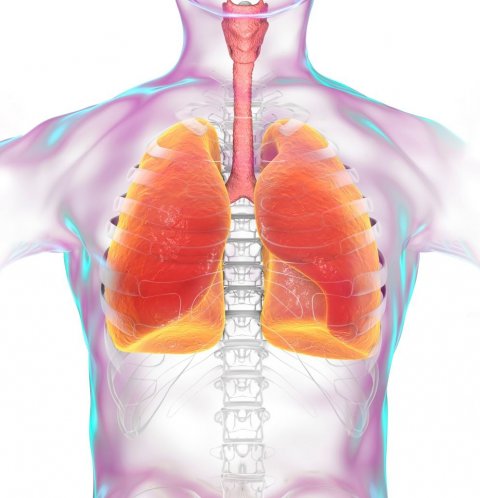News • COPD, asthma and more
Deaths and disability due to lung diseases on the rise
Poorest regions of the world carry the greatest disease burden, say researchers

Image source: Shutterstock/Kateryna Kon
There has been an increase in deaths and disability due to chronic respiratory (lung) diseases over the past three decades, finds an analysis of data from 195 countries published by The BMJ. The poorest regions of the world had the greatest disease burden. Ageing and risk factors including smoking, environmental pollution, and body weight also play a key role, say the researchers. Chronic respiratory diseases pose a major public health problem, with an estimated 3.9 million deaths in 2017, accounting for 7% of all deaths worldwide. Chronic lung disease (COPD) and asthma are the most common conditions, but others such as pneumoconiosis (lung disease due to dust inhalation), interstitial lung disease and pulmonary sarcoidosis (due to lung scarring and inflammation) are also global public health concerns.
Previous analyses of death and loss of health due to chronic respiratory diseases were based on limited data or confined to local areas. To try and plug this knowledge gap, researchers in China used data from the Global Burden of Disease Study 2017 to describe trends in mortality and disability adjusted life years (DALYs) - a combined measure of quantity and quality of life - due to chronic respiratory diseases, by age and sex, across the world during 1990-2017.
Between 1990 and 2017, the number of deaths due to chronic respiratory diseases increased by 18%, from 3.32 million in 1990 to 3.91 million in 2017. The number of deaths increased with age and rose sharply in those aged 70 and older, a burden that is likely to increase as the worldwide population ages, suggest the authors. During the 27 year study period, rates of death and disability ranked according to age (known as the age standardised mortality rate) decreased, particularly in men.
Overall, social deprivation was the most important factor affecting rates of death and disability, with the highest rates seen in the poorest regions of the world. Lower mortality was seen in more affluent countries, reflecting better access to health services and improved treatments. Smoking was the leading risk factor for deaths and disability due to COPD and asthma. In 2017, smoking accounted for 1.4 million deaths and 33 million DALYs, particularly in poorer regions, indicating an urgent need to improve tobacco control in developing countries, say the authors.
Pollution from airborne particulate matter was the next most important risk factor for COPD, with one million deaths and 25 million DALYs. A high body mass index has also accounted for the most deaths from asthma since 2013, particularly in women, and has contributed the most to DALYs since 2003, add the authors. “As the prevalence of obesity continues to increase at a worrying rate worldwide, weight loss should be included in the management of obese patients with asthma,” they write.
The researchers point to some study limitations, such as differences in disease definitions and rates of misdiagnosis across countries. Nevertheless, they say this study showed that the number of global deaths and DALYs from chronic respiratory diseases increased from 1990 to 2017, while the age standardised mortality rate and age standardised DALY rate decreased, with a more profound decline in males.
Regions with a low socio-demographic index had the greatest burden of disease, they add. The estimated contribution of risk factors (such as smoking, environmental pollution, and a high body mass index) to mortality and DALYs “supports the need for urgent efforts to reduce exposure to them,” they conclude.
Source: The BMJ
25.02.2020











